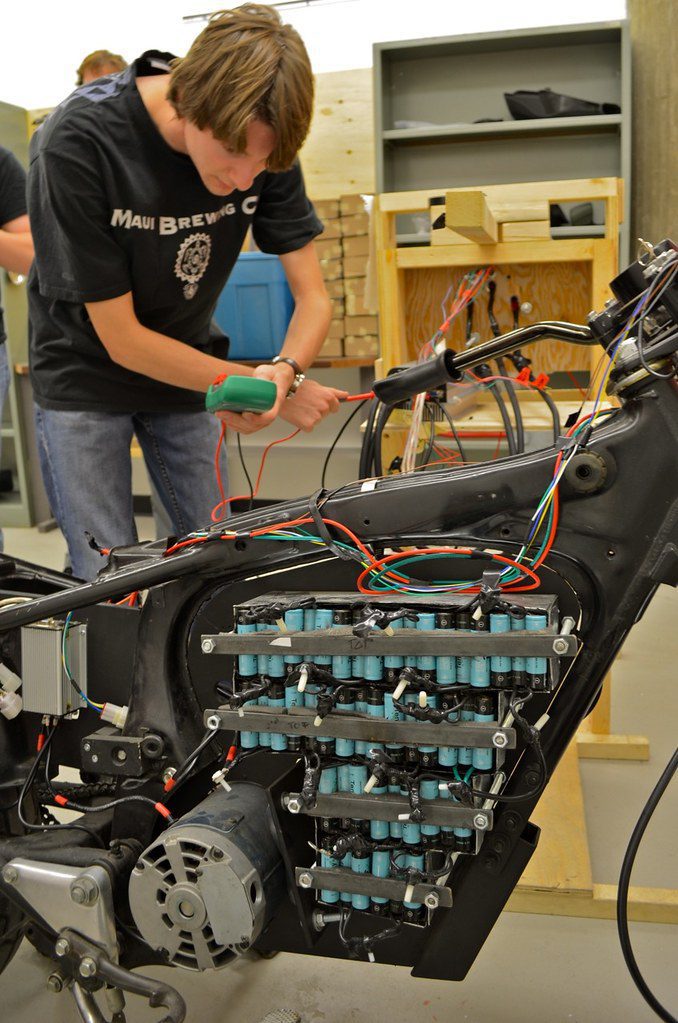
You have taken your beloved motorcycle out on the road at least twice a month since you bought it. Now that it is time to take a vacation, you are concerned that the battery will die when you return.
How long does a motorcycle battery last without charging? What can be done when the bike is not used long?
Many motorcycle owners don’t ride their bikes as often as they like. Winter is one time of the year when bikes are often left to sit at the corner of the garage for weeks.
During such times, the battery is left unused so the alternator does not charge it to keep the juices flowing. How long will it last before it dies?
It will be between 2 and 4 months before the battery goes flat. After that, it must be recharged to get it to work again. If it is an old battery, you may be unable to revive it.
Motorcycle Battery Charging Process
A motorcycle battery works just like a car battery. It is the source of electric current but is not responsible for maintaining the current supply to the electrical components.
Vehicle batteries are designed to provide large amounts of current over a short period…an instant, you could call it. That is exactly what the motorcycle battery does.
It provides electric current used to start the engine and get it running. Once that is done, another charging system component called the alternator takes over.
The alternator serves to charge the battery so that it has sufficient voltage the next time you need to start the engine. As soon as the minimum number of RPMS (revolutions per minute) is reached as you ride, the alternator starts charging the battery.
If you were out on a 15-minute ride, the battery is ready for the next time you press the start button by the time you get to your destination.
The battery will likely die if you don’t ride your bike for two or more months. The alternator has not had a chance to do its job.
How Long Does A Motorcycle Battery Last Without Charging?
How long can you keep your motorcycle tucked away at the corner of your garage before the battery dies? The answer depends on a few variables.
Depending on the battery type, age, and climate, this time could be shorter or longer.
Type of battery:
There are a few types of batteries available in the market. Most bikes have lead-acid batteries. Other types are AGM (Absorbed Glass mat), Gel, and Lithium-ion batteries
Some batteries discharge faster than others. Gel batteries are known for slower discharge than lead acid batteries.
Age of battery:
Lead acid batteries have an average life span of between 3 and 5 years. If your battery is nearing the end of its lifespan, it discharges faster than a newer battery would.
Make a mental note every time you buy a new battery so you can keep track of its life and know when it is almost time to replace it. It is in its final days if you can’t remember buying a battery.
Temperatures:
Atmospheric temperatures in an area play a role in the battery discharge rate. The rate rises in higher temperatures and drops in cooler areas. If you have an old battery in a warm area, don’t be surprised if it dies sooner than the four months mentioned.
Parasitic Drain
This phenomenon could explain why your motorcycle battery continues to drain even when you haven’t ridden in 2 months. It is a low-level drain of current which continuously sucks out power and could eventually suck it dry.
Such leaks come from electrical components like alarms, clocks, or GPS systems. A sure way to kill your battery is when you forget the lights on and leave the bike tucked away for an indefinite period. The light continues to draw current from the battery, yet it is not being recharged.
How to check for parasitic drain:
To find out if there is a leak somewhere, remove the negative battery cable and ensure that your volt-ohm meter is in amps mode. Also, make sure the engine is off.
Place the meter leads between the battery’s negative terminal and the negative cable. The current draw should read zero. A small amount of drain (a few milliamps) is acceptable. Anything higher than that is cause for concern and should be investigated.
What’s The Solution?
Temperatures are dropping with each passing day; winter is drawing closer. Pretty soon, you will put a 3-month break on your weekly bike rides like every winter. You are worried the motorcycle battery will die on you… again. What can be done?
One way is to disconnect the battery. Disconnect the negative cable. This breaks the current flow, ensuring that the electrical components of the bike cannot draw any current from the battery.
Another solution is to invest in a smart charger. This is a superior charging device. Unlike regular trickle chargers, you don’t have to worry about overcharging the battery. It delivers as much current as the battery needs, and when fully charged, it cuts off the current.
You can connect a smart charger and take it off on vacation without damaging the battery. This charger can cut off the current when the battery is full and starts charging again when it detects a significant amount of discharge.
If you prefer not to leave a smart charger connected but still won’t use your bike for several weeks, you can leave it connected every week until you are ready to ride again.
You will have to dig deeper into your pocket to get your hands on an intelligent charger, compared to a regular motorcycle battery charger. However, considering its convenience, it is worth the investment, and the risk of overcharging is eliminated.
Batteries in Cold Weather
Like many people, batteries don’t like the winter.
It is quite common for motorcycle engines to fail to start on a freezing day. The myth to dispel here is that cold weather drains your battery. Cold weather doesn’t necessarily drain the battery.
Engine start challenges arise because the bike needs more voltage to start, and the battery may be unable to give it. Cold impedes the chemical reaction necessary for current to be generated.
Here is how: The connection between the positive and negative terminals generates an electric current. A chemical reaction generates electrons that produce the battery’s current. Extremely cold weather hinders this chemical reaction. This can happen even with a fairly new battery.
Why do so many batteries die in the cold weather? Well, the age factor returns. If your battery is old or nearing the end of its life, it will probably die during this season.
Final Thought
How long does a motorcycle battery last without charging? This question is commonly asked in the months preceding winter when bikers often take a break.
Lead acid batteries, the most common in motorcycles, can last between 2 and 4 months without charging. The age of the battery is a significant variable.
Newer batteries can sit for up to 5 months without charging, while older batteries rarely last more than two months. Extremely cold temperatures also have a role to play because crucial chemical reactions in the battery are impeded.
